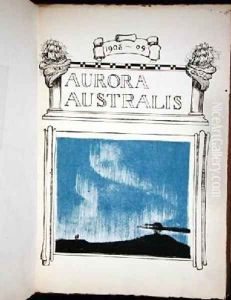George Marston Paintings
George Marston was an American artist, not widely known outside of specialist circles, primarily recognized for his contributions as an Antarctic explorer and as an artist during the early 20th century. Born on March 19, 1882, in Southsea, Hampshire, England, Marston is best known for his role as the official artist on Sir Ernest Shackleton's Imperial Trans-Antarctic Expedition (1914–1917), aboard the ship Endurance. His artistic abilities were employed to document the landscapes and events of the expedition, providing invaluable visual records of this historic adventure.
Marston trained at the Regent Street Polytechnic in London, which equipped him with the skills needed for his later work. His connection with Shackleton began when he was recruited for the Nimrod Expedition (1907–1909) as an expedition artist. However, it was during the Endurance expedition that Marston's work gained more prominence. After the ship was trapped and eventually crushed by ice, Marston's illustrations became a crucial part of the expedition's legacy, capturing the harrowing experience of the crew as they struggled for survival in the unforgiving Antarctic environment.
Throughout the expedition, Marston's artwork recorded not only the dramatic landscapes and seascapes of the Antarctic but also the daily life and the spirit of the crew in the face of adversity. His paintings and sketches, often created under extremely challenging conditions, are valuable historical documents as well as works of art. They are characterized by their attention to detail and ability to convey the emotional and physical experience of the expedition members.
After the expedition, Marston continued to work as an artist but did not achieve significant fame during his lifetime. His contributions to the field of exploration and his role in documenting one of the great stories of survival in the early 20th century have been recognized posthumously. George Marston passed away on October 22, 1940. Today, his works are a testament to the human spirit and provide a visual narrative to one of the most daring explorations of the Antarctic. They can be found in museum collections and are studied by historians interested in the Heroic Age of Antarctic Exploration.






